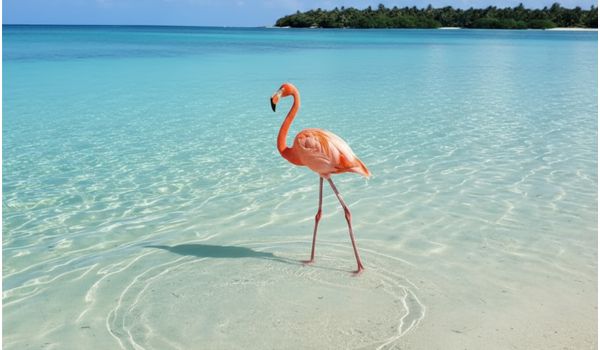Livingborderlessly
Archives
Aruba Travel Guide 2025: Your Guide to the One Happy Island
SIGN UP FOR OUR NEWSLETTER
Aruba Reimagined: Why the One Happy Island Is a 2025 Hotspot |
Beyond the reliable sunshine, a wave of renewal is sweeping across Aruba, from Oranjestad's cultural revival to a surge in luxury resorts and a deepened commitment to sustainable travel. |
Aruba has always been the Caribbean's guarantee for sun-drenched escapes, a happy island comfortably situated outside the hurricane belt.
But as 2025 unfolds, something more is happening on this desert oasis.
A quiet evolution is turning into a vibrant renaissance.
The island is buzzing with a fresh energy, marked by record-breaking tourism growth and a surge in sophisticated development that promises to reshape its future.
Nowhere is this transformation more apparent than in its capital, Oranjestad.
The city is in the midst of a major revitalization project, an ambitious effort to blend its iconic pastel Dutch colonial architecture with modern, sustainable urban design.
Recent government-backed initiatives are transforming historic buildings into student housing and commercial hubs, while infrastructure upgrades along streets like Wilhelminastraat are enhancing walkability with expanded parking and new EV charging stations.
The goal is bold: to establish Oranjestad as a premier “Culinary Capital” of the Caribbean.
New pedestrian-friendly zones are being designed to foster a vibrant scene of cafes and restaurants, creating a dynamic heart for both locals and the more than 800,000 cruise passengers who visit annually.
This growth extends to the island's legendary coastline.
The high-rise resorts of Palm Beach and the serene shores of Eagle Beach are welcoming a new class of luxury accommodations.
The long-awaited St. Regis Aruba Resort has officially opened its doors, bringing an ultra-luxury experience to Palm Beach.
Further south, the adults-only Secrets Baby Beach Aruba has debuted, offering an all-inclusive retreat in the quieter San Nicolas region.
Meanwhile, the new Joia Aruba by Iberostar on Eagle Beach adds a sustainable and sophisticated option for discerning travelers.
This hotel boom is a direct response to a remarkable spike in visitor numbers, with tourism growing over 3% in the first half of 2025 alone.
Despite the gloss of new development, Aruba’s rugged soul remains its most compelling attraction.
Arikok National Park, which covers nearly 20% of the island, is a wild expanse of cactus-studded landscapes, ancient caves, and dramatic coastline.
Here, you can hike to the remnants of historic gold mines at Miralamar or discover ancient Caquetio pictographs inside the Fontein Cave.
The park is a powerful reminder of the island’s commitment to preservation, a philosophy that is increasingly guiding its future.
Sustainability is no longer just a buzzword here; it's a core principle.
The government has banned single-use plastics and harmful sunscreens, while many resorts are leading the charge with green certifications and renewable energy projects, like the island's notable wind turbines.
This eco-conscious mindset offers a more responsible way to experience paradise.
The island’s famous trade winds, which bend the iconic Divi Divi trees into their signature shapes, also power some of the best windsurfing and kitesurfing in the world.
Spots like Fisherman’s Huts offer flat, shallow waters perfect for beginners, while the stronger surf at Boca Grandi on the southwestern side provides a challenge for advanced riders.
The cultural calendar for late 2025 is packed, offering deep dives into the local spirit.
Events like the Autentico Aruba Culinary Festival in October showcase the island's growing foodie scene.
In November, the Aruba Open Beach Tennis Championships draw international athletes and create a festival-like atmosphere.
And for those seeking authentic local flavor, weekly events like the Bon Bini Festival at Fort Zoutman provide a warm welcome with traditional music and dance.
This blend of tradition and transformation defines the Aruba of today.
The island's real estate market is also booming, attracting international buyers and remote workers drawn to its stability and high quality of life.
From luxury beachfront villas to modern condos, the demand for property reflects a growing confidence in Aruba’s long-term appeal.
It's a delicate balance—embracing growth while protecting the very essence that makes it special.
Yet, Aruba seems poised to navigate this new chapter with its characteristic warmth and spirit intact.
The sun, the sand, and the sea are still the main characters, but the story of this happy island is becoming richer, deeper, and more compelling than ever before.
Frequently Asked Questions About Visiting Aruba
What is the best time to visit Aruba?
Aruba enjoys consistent, warm weather year-round as it is located outside the hurricane belt. The peak season is from December to May when prices are highest. For better value and fewer crowds, consider visiting during the summer or fall.
What are the must-do activities in Aruba?
Beyond relaxing on beaches like Eagle Beach and Palm Beach, exploring the rugged terrain of Arikok National Park is a must. Watersports are incredibly popular, especially windsurfing and kitesurfing at Fisherman's Huts. Discovering the Dutch colonial architecture and burgeoning food scene in Oranjestad is also highly recommended.
Is Aruba focused on sustainable tourism?
Yes, Aruba is increasingly committed to sustainability. The island has banned many single-use plastics and promotes eco-friendly practices. Many resorts have earned green certifications, and the island utilizes renewable energy, including prominent wind farms. Visitors are encouraged to travel responsibly to help preserve the island's natural beauty. |

